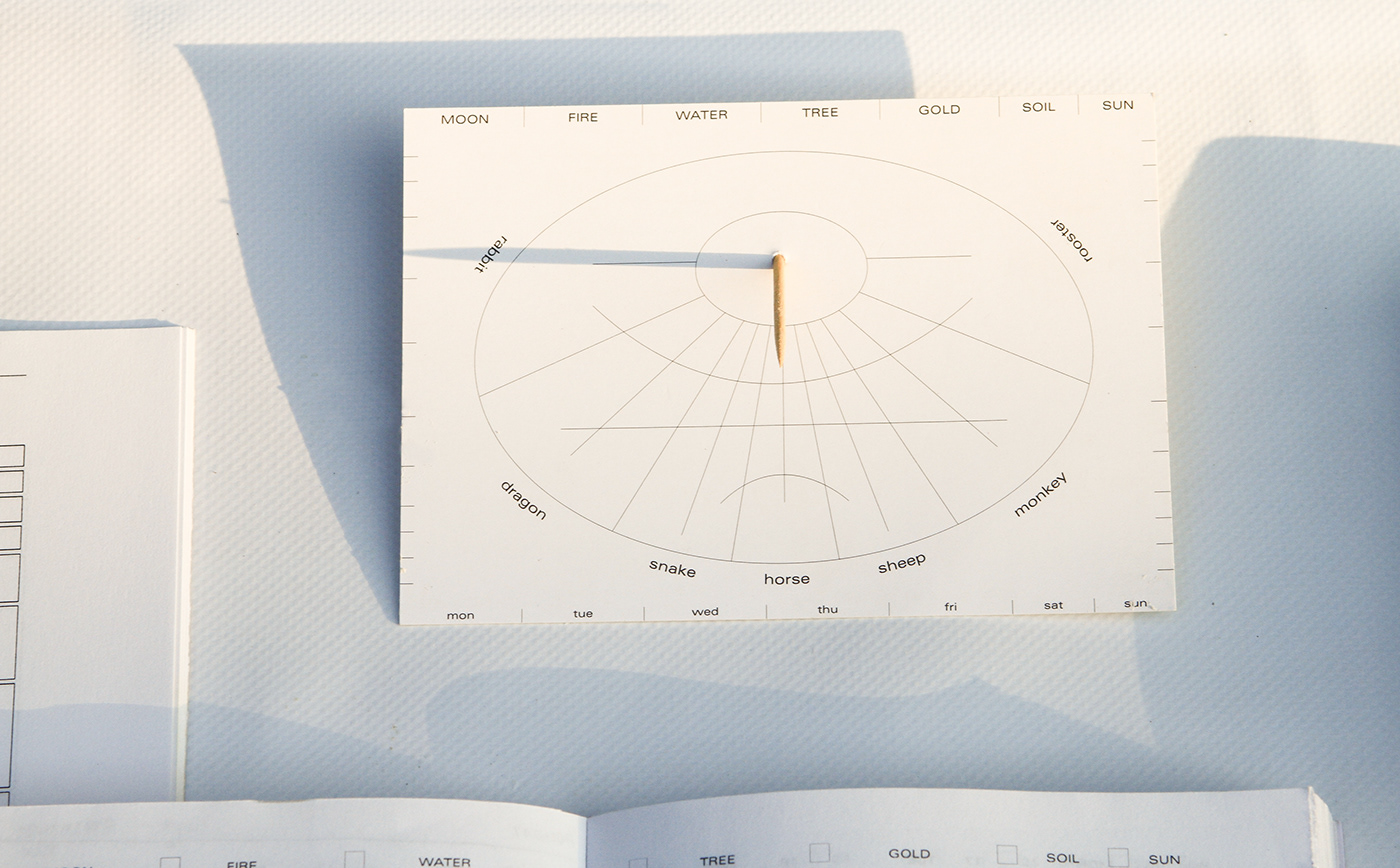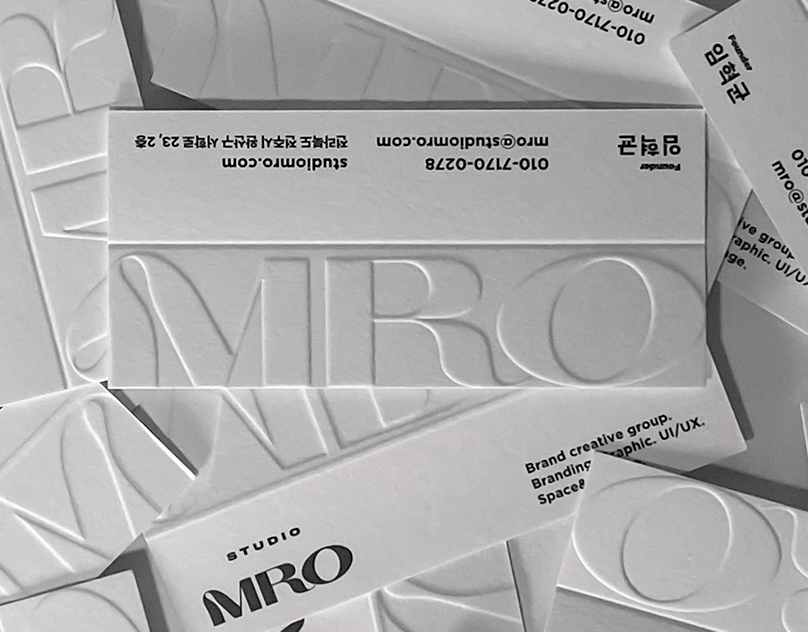TIME IS A LAYOUT
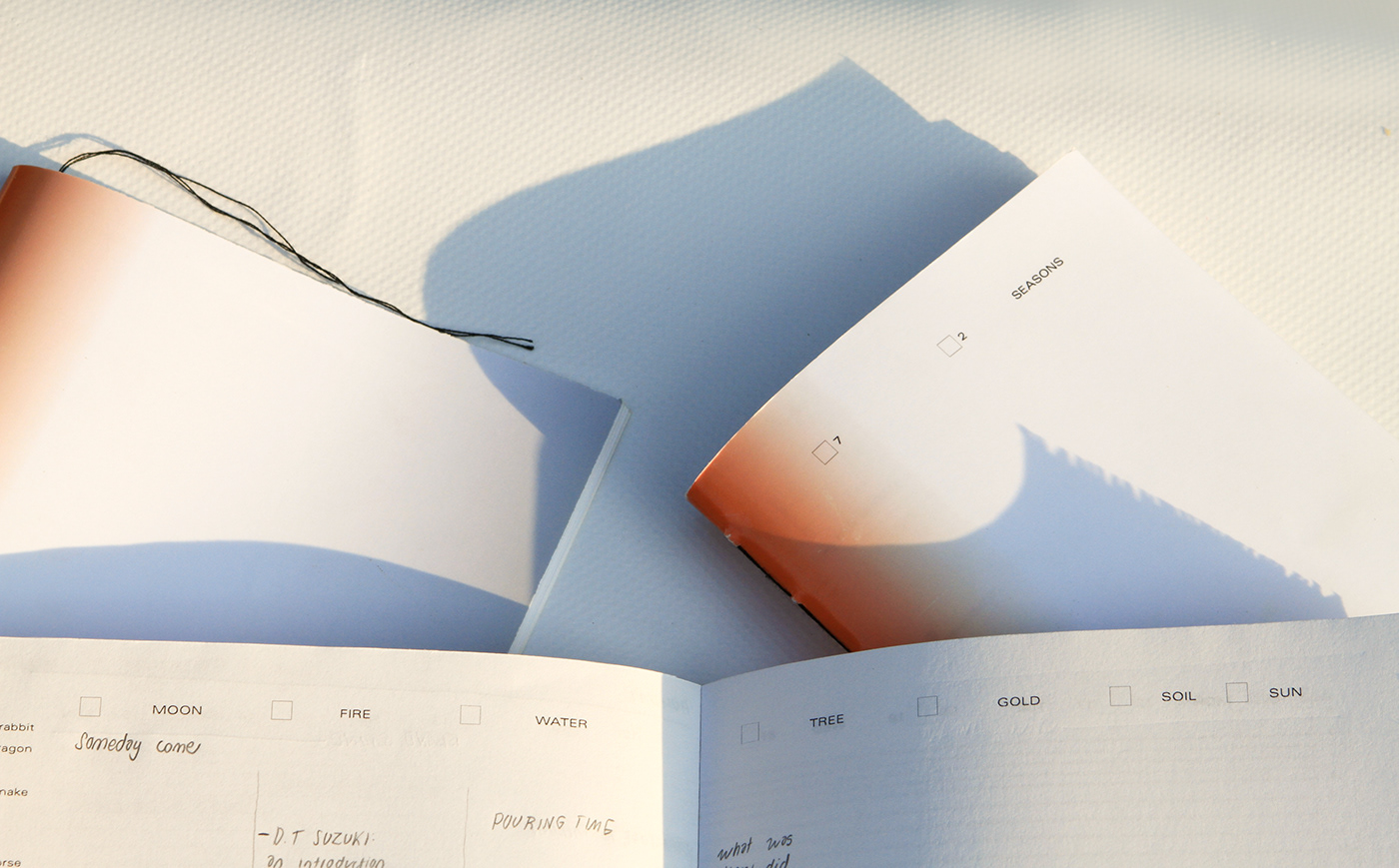
'Time is a layout' is an alternative time-measuring system, based on a research comparing Japanese and Western time-awareness. The four different calendars and clocks invite the user to perceive time differently.
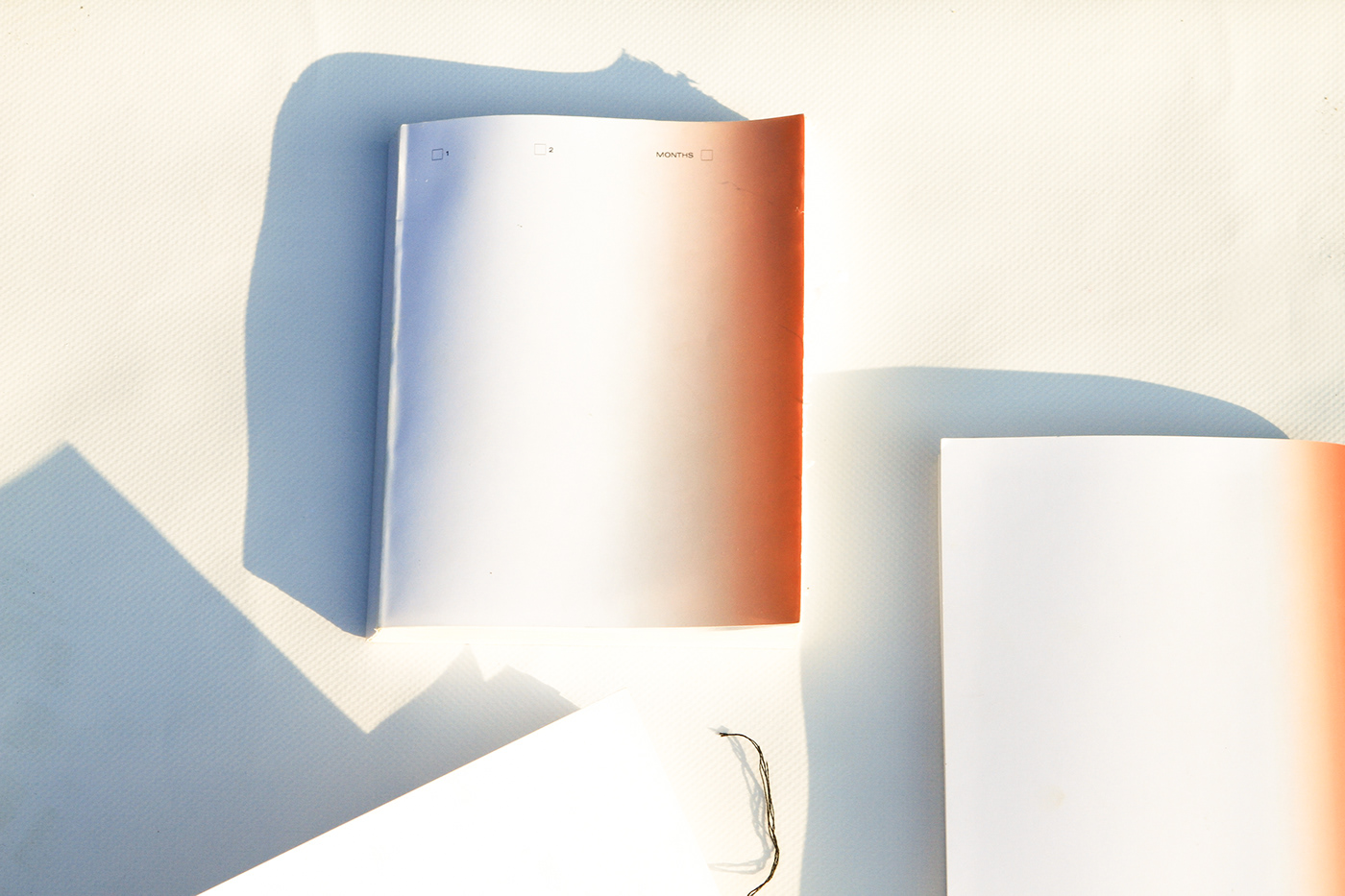
For the first sight, 12 MONTHS is an ordinary weekly planner. It's irregular grid is adjusted on the biorhythm of a regular working person: there is few space left for early mornings and late nights, while the middle of the day is 'stretched' to allow more activities.
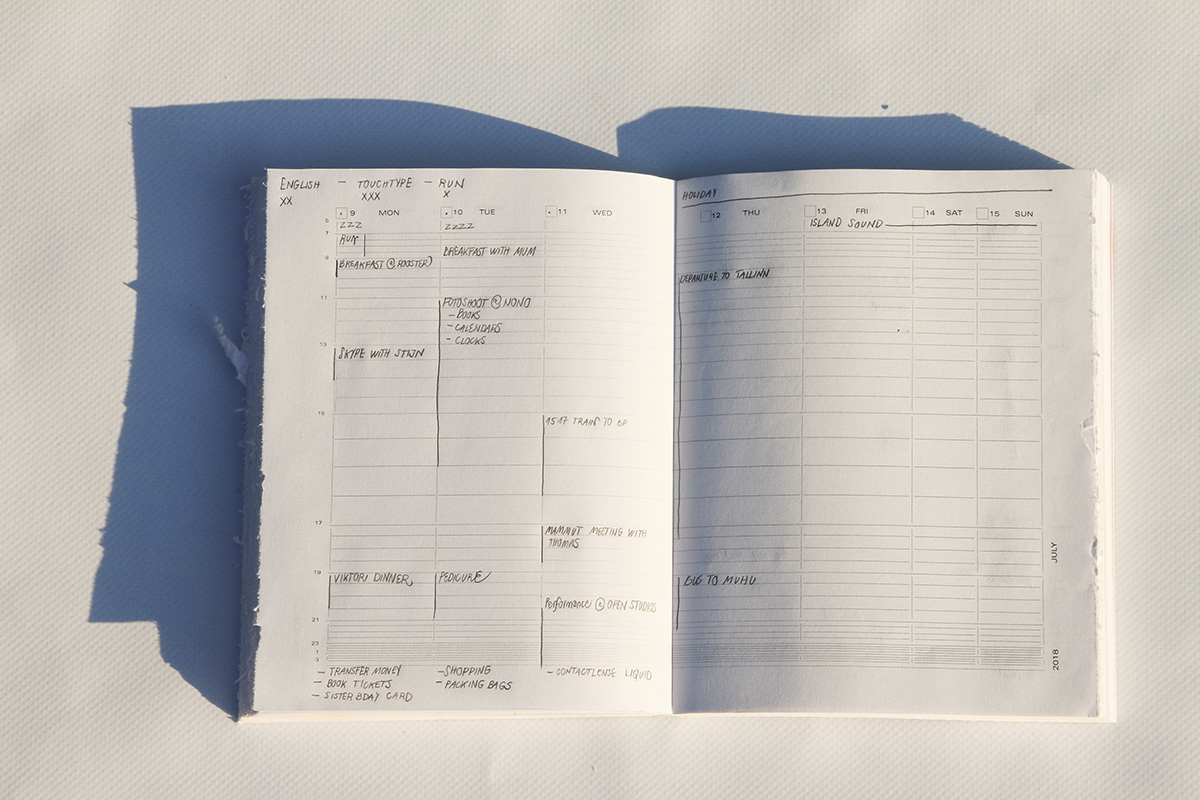
The Japanese binding allows one to rip the pages open.
The inside spread gives space for the thoughts and remarks of a 'private person', while still keeping track of the plans of the 'public person'.
Months, days and hours are named according to a traditional Japanese manner. Reading them invokes a certain poetry.
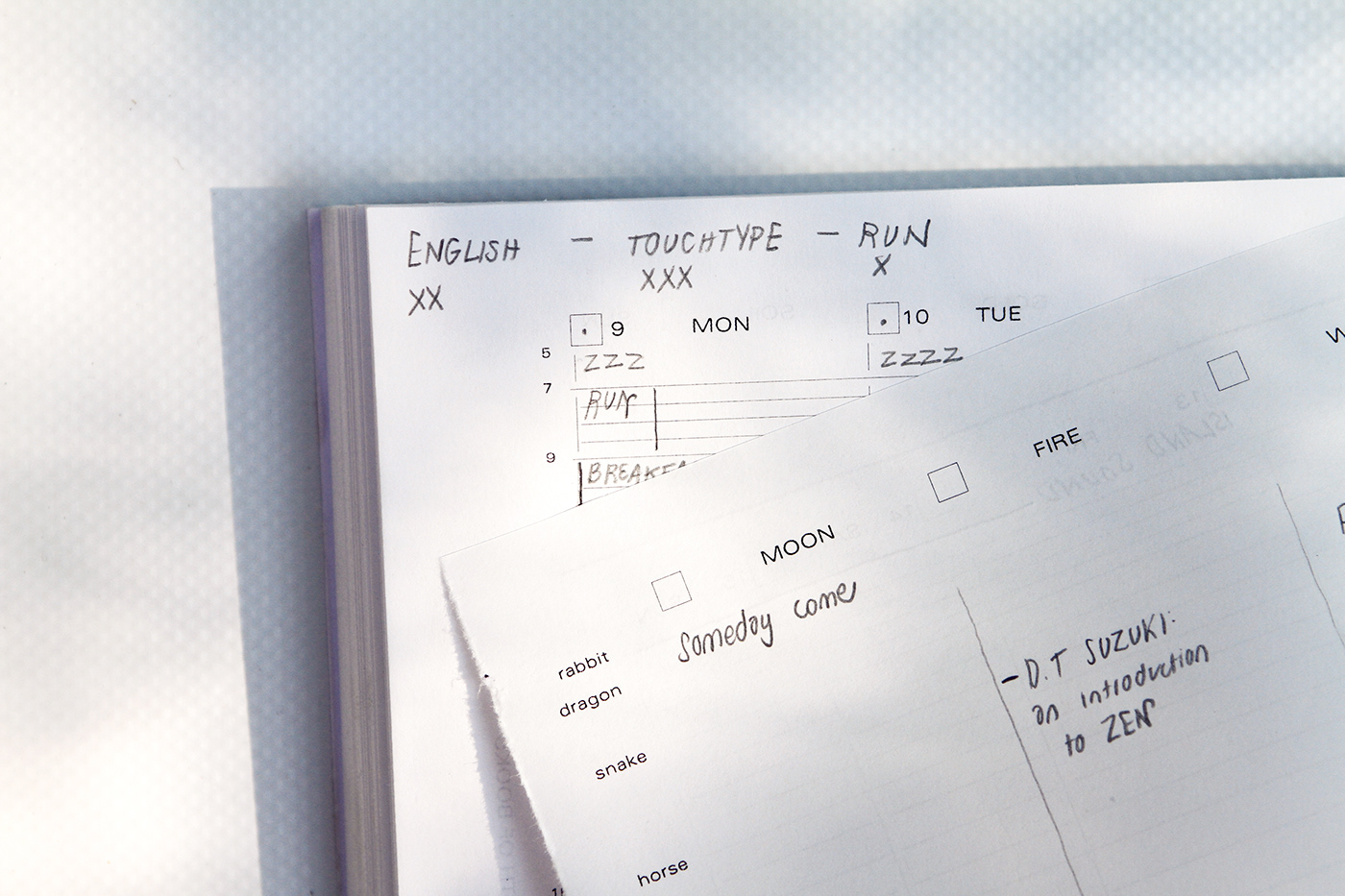

One can see time passing at the edge of the book - making a bookmark unnecessary.
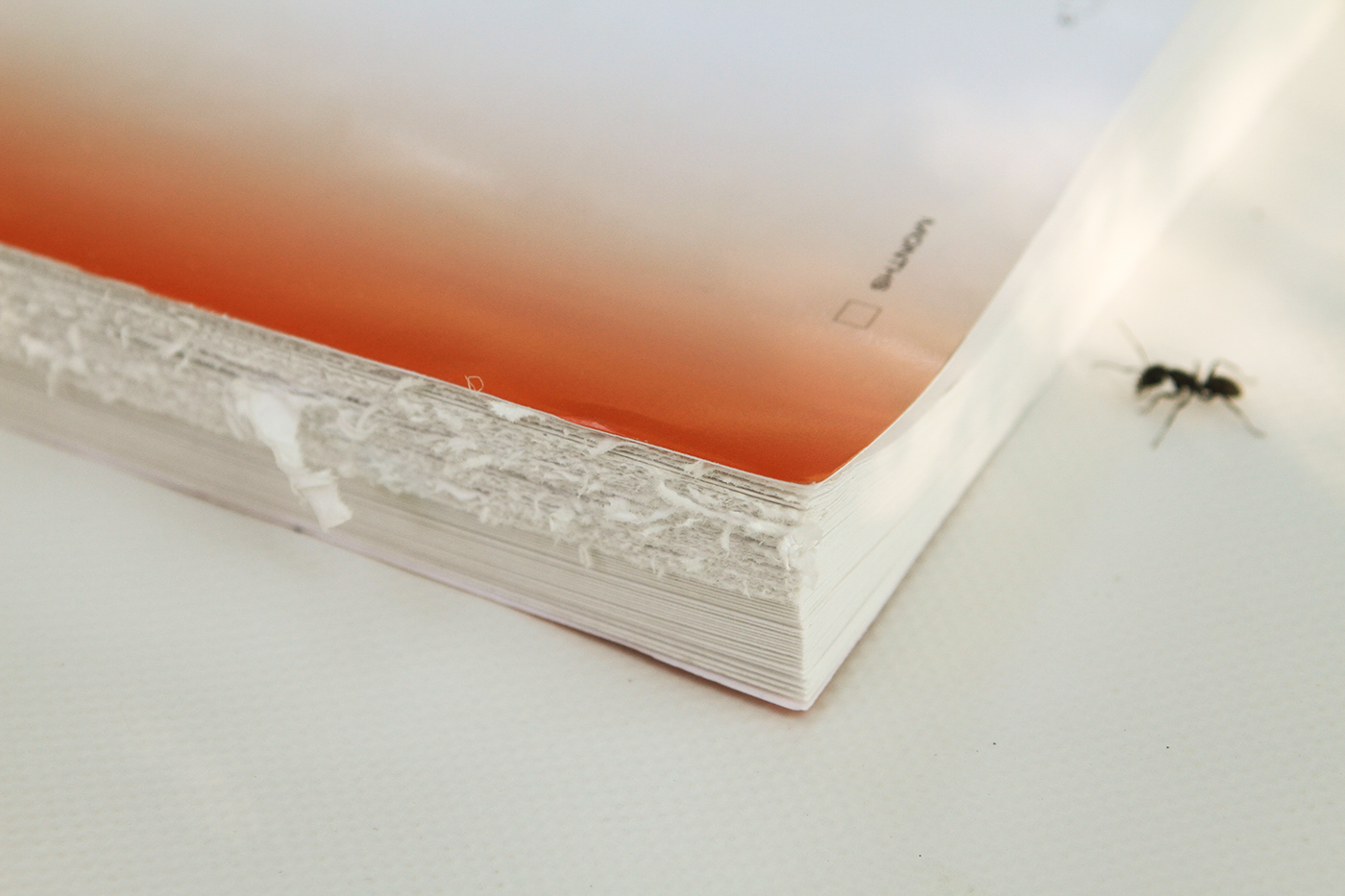

12 WEEKS is a hybrid weekly planner, designed to adapt it's user gradually to a different time perception.
Folding it open, we see a familiar, rather strict grid. Years and months are left blank - since this calendar can be used at any given time.
Tight grids get lighter and dark frames dissolve as the weeks evolve. Step by step, weekdays change into unfamiliar names lent from Japanese origins, opening a poetic possibility of describing a specific moment.
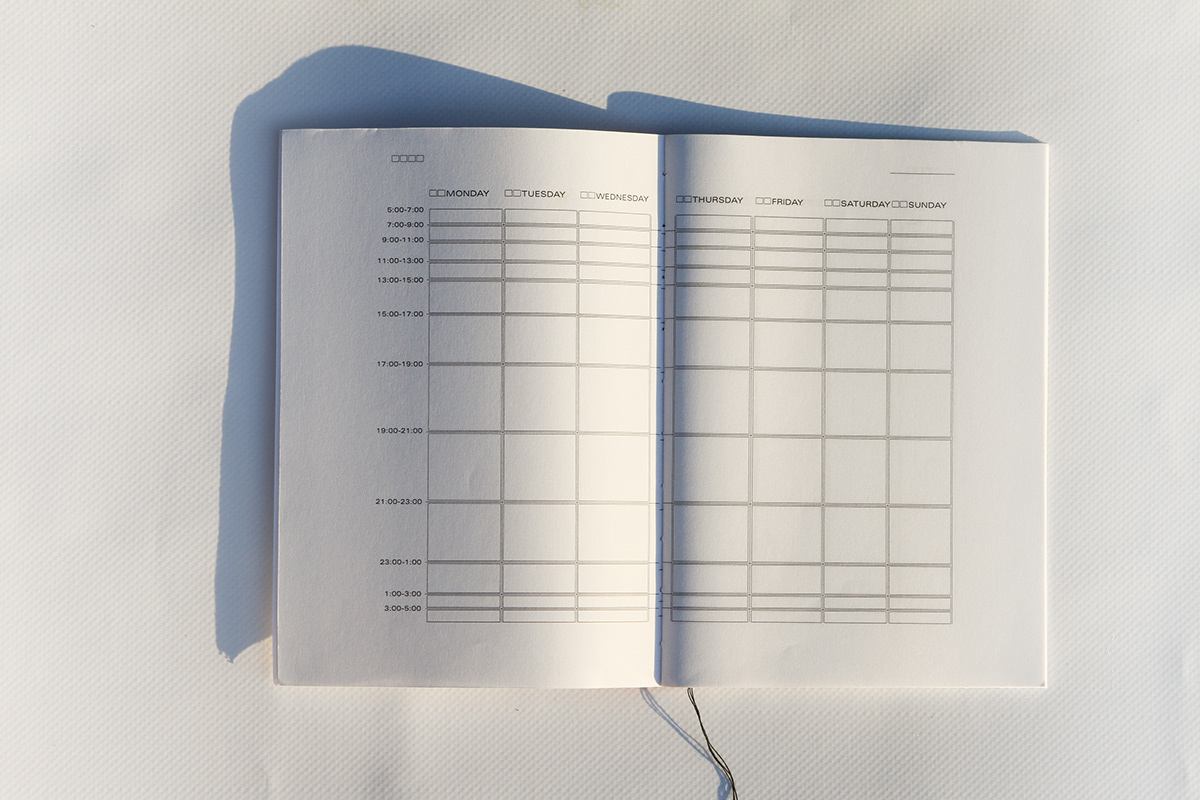

As the previous calendars kept the measures familiar for a Western person, 72 SEASONS invites one to adapt to a completely different way of thinking about time.
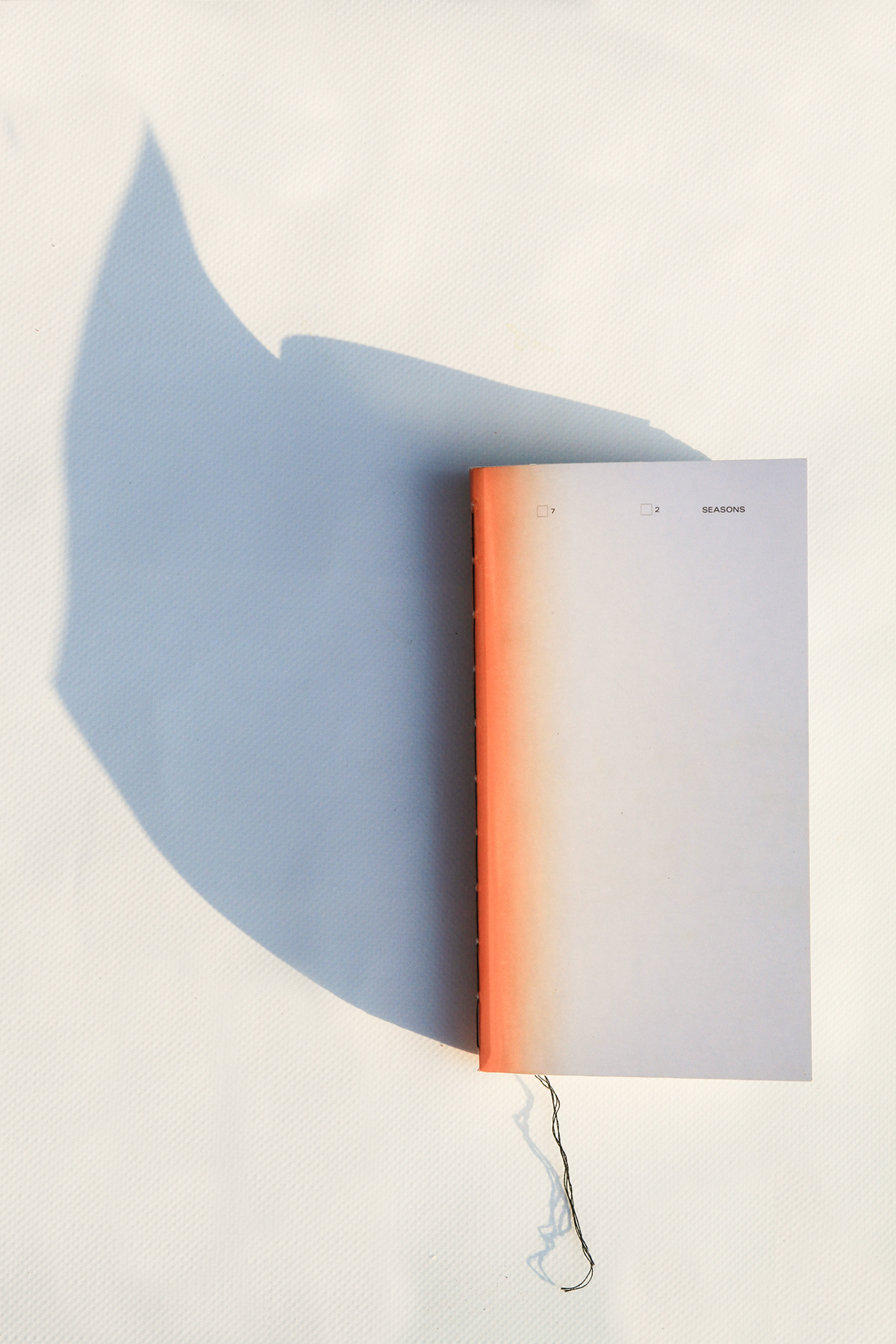
In Japan, a year is divided by 72 seasons.
Each of them is marked by a poetic sentence, based on observations of nature. The same applies to years, months and hours as well. Additionally, every day has it's own quote.
Each of them is marked by a poetic sentence, based on observations of nature. The same applies to years, months and hours as well. Additionally, every day has it's own quote.
72 seasons displays time by this measure, enriching regular days with poetic qualities. Next to that, months, and weekdays can be consistently followed on the other side of each spread.


I implemented the same system on a wall calendar. It gives a structured overview of both Western and Japanese measures. Reading along seasons and days one get's the chance to write poetry by simply telling the date.
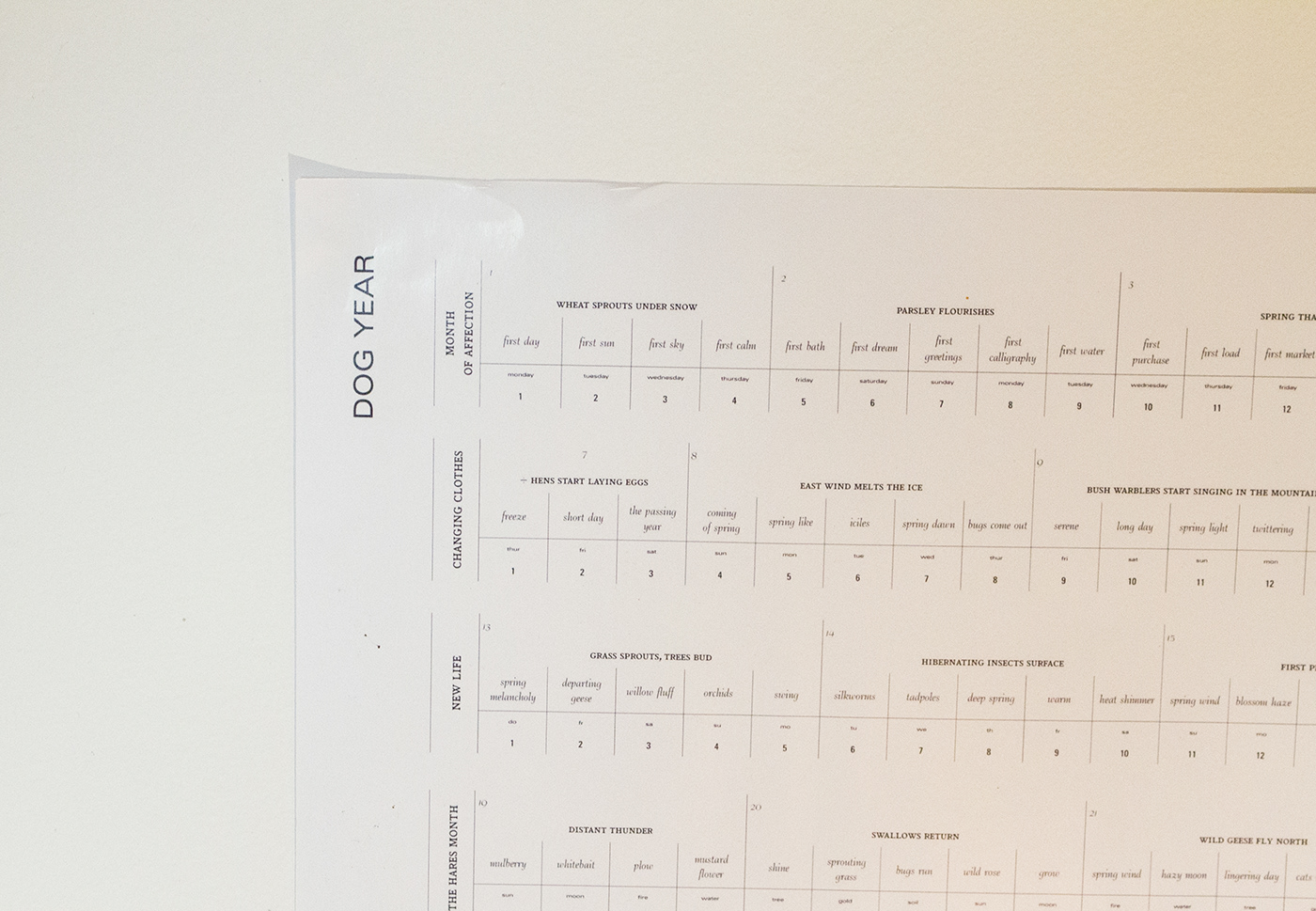
The system includes two clocks. Instead of numbers, both of them display the Japanese names of hours. The one at the left functions as a conventional Western clock. The one at the right works with a 24 hours mechanism, going around once a day. Since traditionally two western hours resemble with one Japanese, this one shows the slow, truly Japanese way of getting through a day.
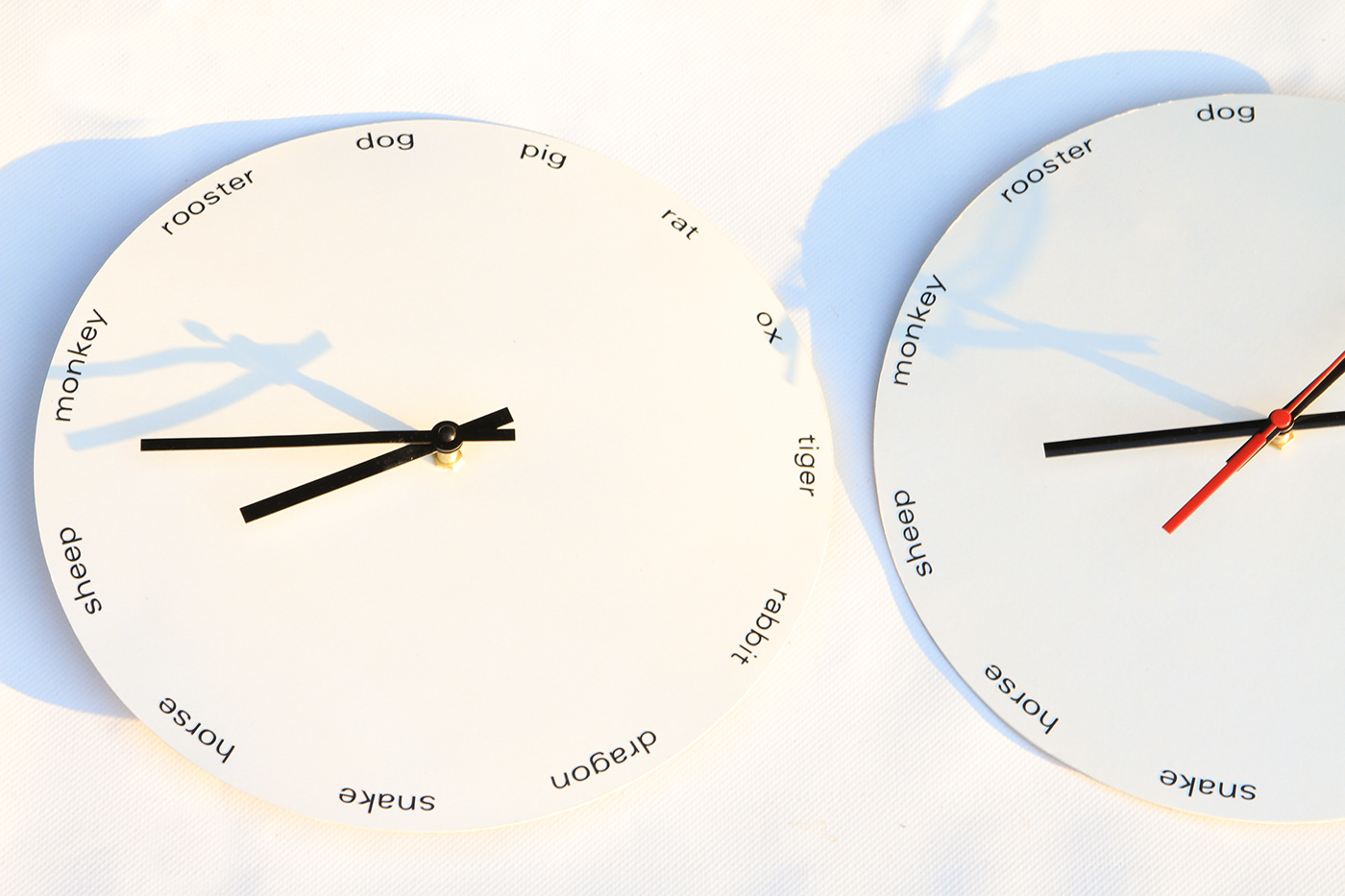
A comparative guide to this system is to be found at the end of every calendar.
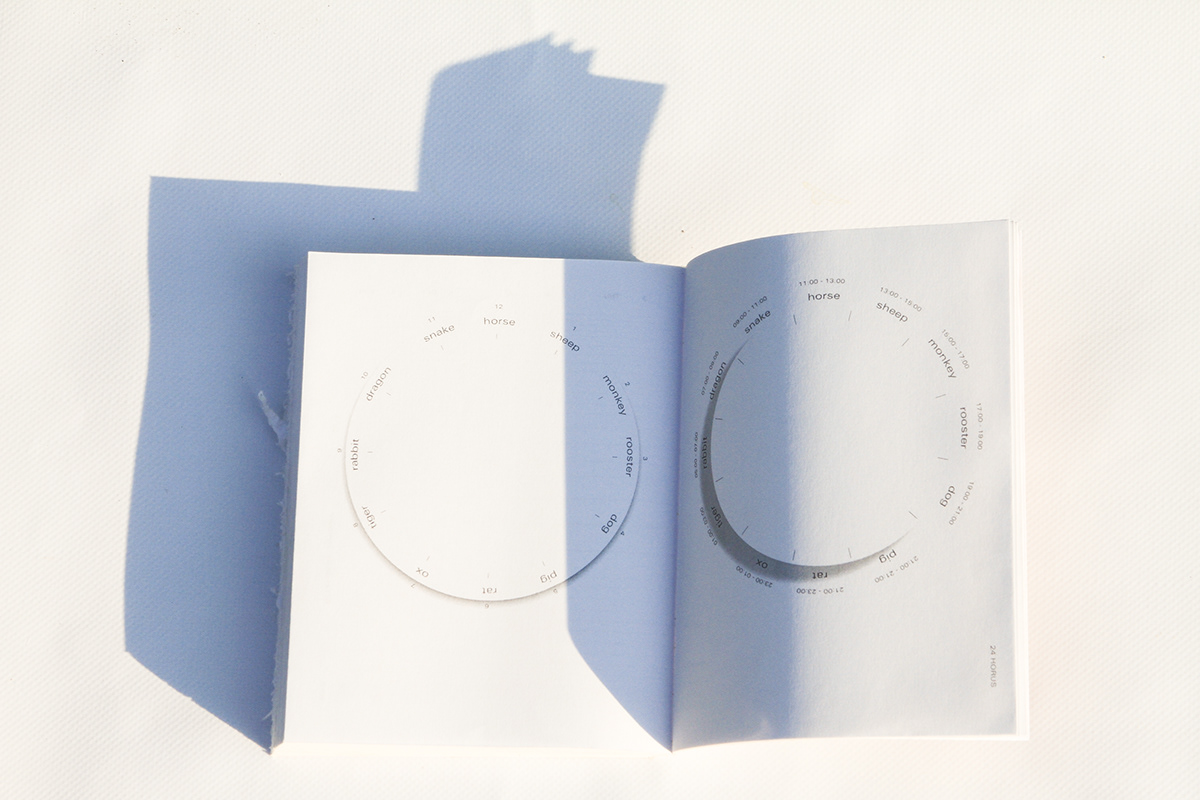
The system includes a sundial as well.
